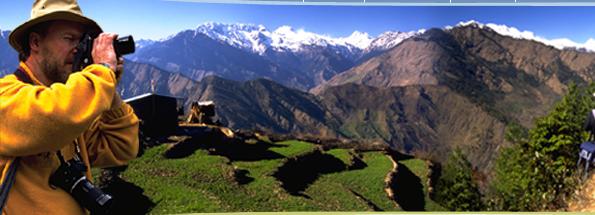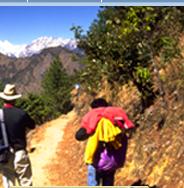Parsa Wildlife Reserve
occupies parts of Chitwan, Makawanpur, Parsa and Bara
districts in central Nepal. The reserve headquarters
is situated at Adabar on the Hetauda-Birgunj highway
and the Reserve covers 499 sq. kms. and established
in 1984.
The dominant landscape of the reserve,
the Churiya hills ranging from 750m. to 950m. run east-west
of the reserve. The reserve has sub-tropical monsoon
climate. The forest is composed of tropical to subtropical
forest types with sal constituting 90% of the vegetation.
In the Churiya hills Chir pine grows and along the stream
and rivers Khair, Sissoo with silk cotton tree occur.
Sabai grass a commercially important grass species grows
well in the southern face of Churiya hill. The reserve
supports a good population of resident wild elephant,
tiger, leopard, sloth bear, gaur, blue bull, wild dog.
Other common animals are sambar, chital, hogdeer, barking
deer, langur, striped hyena, ratel, palm civet, jungle
cat etc.
There are nearly 300 species of birds
in the reserve. Giant hombill, peafowl, red jungle fowl,
flycatchers, woodpeckers etc. are few other common birds
found in the reserve. Many kinds of snakes like king
cobra, common cobra, krait, rat snake, pythons are found
in the reserve due to hot tropical climate.
- Entry Fee Per Person Per Day:
- For Nepalese Nationals, Free
- For SAARC Nationals, Rs. 200/-
- For Other Foreign Nationals, Rs. 1000/-
- (Note: Entrance fee not required for children under
10 years).
Access:
Parsa wildlife reserve is easily accessible from Kathmandu,
being well connected by a national highway and daily
flight to Simra.
|




